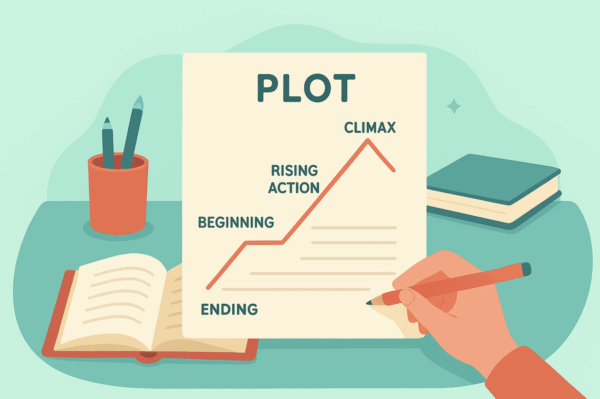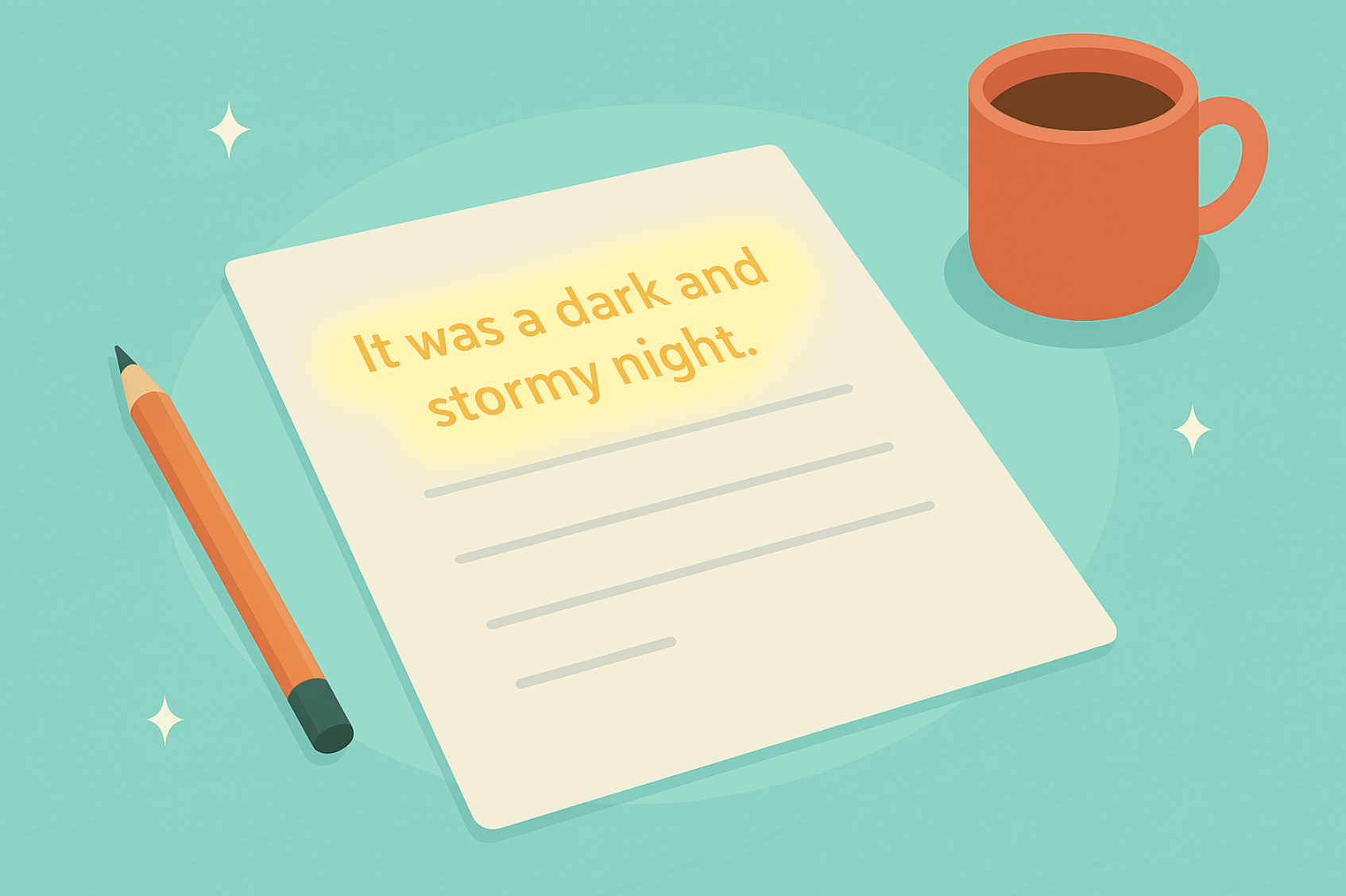There’s something irresistibly delicious about a love triangle. Whether it’s the sticky situations, the gut-wrenching choices, or the electric chemistry between characters, love triangles have been captivating readers for centuries. A well-written love triangle isn’t just about “who will she choose?”—it’s about diving into the messy, vulnerable parts of human life, exploring inner conflict, and creating a story packed with emotional stakes.
Love triangles in book writing work because they mirror the complexity of real relationships. They force characters to grow, make painful decisions, and confront their greatest fears. When done right, these tropes are more than just romantic entanglements—they’re wonderful plot devices that keep readers hooked, guessing, and emotionally invested.
But knowing how to write love triangles can be tricky. How do you avoid clichés? How do you balance the romantic tension with the main story? And most importantly, how do you satisfy readers without losing their interest? In this guide, we’ll explore the art of writing love triangles that feel fresh, compelling, and perfectly woven into your narrative. From character development to plot twists, we’ll show you how to craft a love triangle that adds unending value to your story and keeps readers turning pages long past bedtime.
What Makes a Love Triangle Work?
At its core, the love triangle trope is a tale as old as storytelling itself: three characters, tangled in a web of emotions, desires, and choices. It’s not just about romance—it’s about drama, stakes, and the journey that ultimately shapes the protagonist’s future. A love triangle thrives when it pushes the story forward, forcing characters to grow and confront challenges they’d rather avoid.
Take Katniss Everdeen’s romantic relationships in The Hunger Games. Her bond with Peeta symbolizes survival and sacrifice, while her connection with Gale represents her past and freedom. Or consider Bella’s relationship in Twilight—a tug-of-war between the human warmth of Jacob and Edward’s dangerous, immortal life. These triangles work because they go beyond just romantic relationships. They create dilemmas that shape the main character’s choices, testing not only their heart but their very identity.
Key elements of a compelling love triangle include three well-developed characters, major stakes, and an internal conflict that keeps readers hooked. It’s not enough to simply take one character and throw two love interests into the mix—each must represent something vital to the protagonist’s growth or protagonist’s world, whether it’s comfort, ambition, or a painful transformation.
Above all, a good love triangle should serve the main story, not overshadow it. It’s a tool to amplify tension and deepen the narrative, not a distraction that drags the plot down. Done right, a love triangle becomes more than a romantic dilemma—it becomes the beating heart of a story readers can’t put down.
Building the Characters: The Beating Heart of a Love Triangle
A love triangle is only as strong as the characters most romantically involved together. For readers to truly care about your story, all three characters—your main character and their two potential suitors—need to feel real, dynamic, and multidimensional. Without thoughtful character development, your triangle risks feeling flat, predictable, or, worse, boring.
Start by giving each character their own distinct goals, flaws, and backstory. Why does Character A capture the protagonist’s heart? What makes Character B stand out? More importantly, what do these suitors symbolize for your main character’s journey? For example, in Twilight, Edward’s dangerous allure forces Bella to question her willingness to embrace immortal life, while Jacob’s earthy reliability anchors her in humanity. Each love interest brings unique stakes, making Bella’s choice a defining moment in the story.
The protagonist’s internal dilemma is what drives the love triangle forward. A strong love triangle isn’t just about who’s hotter; it’s about what these romantic relationships reveal about the main character. Does same person or their choice reflect growth, fear, or longing? The more tangled the emotional stakes, the more engaging the triangle becomes.
However, beware of the “perfect” suitor trap. No one is flawless in real life, and your characters shouldn’t be either. A love interest who’s good at everything—from saving kittens to solving world hunger—isn’t relatable. Instead, make each character’s flaws as compelling as their strengths. Readers love seeing characters struggle with messy, realistic emotions, not shiny perfection.
Ultimately, a strong love triangle keeps the protagonist actively choosing, grappling with tough decisions that shape their identity and romantic relationship. Done right, it’s not just about romance—it’s fertile ground for character deals, growth, conflict, and unforgettable storytelling.
High Stakes and Painful Transformations: Keeping Readers Guessing
Love triangles thrive on tension, and tension comes from major stakes. It’s not enough to simply pit two characters against each other for the protagonist’s heart—there must be deeper consequences for every choice made. These stakes can be personal, emotional, or even life-altering, forcing the characters (and readers) to grapple with what’s truly at risk.
Consider Twilight, where Bella’s love triangle with Edward and Jacob isn’t just about choosing between two guys. It’s about deciding between her human life or immortal life, between safety or danger, between staying grounded or pursuing the unknown. The weight of these decisions adds emotional depth and keeps readers guessing—not just about who she’ll choose, but what kind of person she’ll become.
To create a compelling love triangle, you need both internal conflict and external challenges. Internal conflict is the protagonist’s struggle with their emotions, desires, and fears—do they pick stability or passion, the known or the mysterious? External challenges, or her suitors on the other hand, are the obstacles that raise the stakes, like family disapproval, societal pressures, or even a battle for survival.
Stakes should always push characters out of their comfort zones. Growth happens when your protagonist is forced to confront their flaws, make painful choices, and undergo transformation. The more they risk—whether it’s love, their future, or their sense of self—the more gripping your love triangle becomes.
By infusing your love triangle with major stakes and a dose of painful transformation, you’ll bring fresh life to the story, immersing readers in a high-stakes journey they won’t want to end.
Creating Chemistry Without Cliché
A love triangle lives or dies through the romantic relationships at its core. To hook readers, the chemistry between characters needs to feel authentic, not like a formulaic regurgitation of tired tropes. Forget the instant love sparked by an accidental coffee spill or the “brooding bad boy who’s just misunderstood.” Instead, focus on building connections that feel real, layered, and deeply rooted in your characters’ personalities and experiences.
Deciding between instant chemistry and a slow-burn romance depends on your story’s tone. Instant chemistry can be electric, drawing characters together with undeniable magnetism, but don’t let it fizzle out too quickly—sustain it with emotional depth. On the other hand, slow-burn romances thrive on subtle, simmering tension that leaves readers aching for resolution. Think longing glances, near-misses, and heart-pounding moments of almost-confessions.
Balance is key: subtle emotional tension trumps over-the-top dramatics. Readers will grow weary of love interests constantly fighting over the protagonist like jealous toddlers. Instead, infuse your triangle with moments that feel meaningful—conversations that reveal vulnerabilities, shared goals, or moments where one love interest supports the protagonist’s friends or dreams.
To satisfy readers, keep them guessing. They should see the appeal of both love interests while still questioning who the protagonist will ultimately choose or her internal dilemma throughout. Above all, it ensures that the relationships evolve naturally with the story, enhancing the stakes and character growth.
By avoiding clichés and crafting genuine chemistry, your love triangle will captivate readers, keeping them on edge while rooting for every heart-wrenching twist.
Balancing the Love Triangle With the Overall Story
A well-written love triangle should never hijack your story—it’s a plot device, not the plot itself. While love triangles bring plenty of drama and tension, letting them dominate the narrative risks derailing your main story. Readers want romance, yes, but they also crave a compelling external plot that keeps the world moving beyond the protagonist’s love life.
To strike the right balance, ensure the love triangle blooms naturally alongside the protagonist’s growth and the external plot. The romance should enhance the story, not distract from it. For example, in The Hunger Games, Katniss’s love triangle with Peeta and Gale doesn’t exist in a vacuum. It’s intricately tied to her survival, her role in the rebellion, and her struggle with identity. The romantic tension deepens her inner conflict, adding layers to her decisions without pulling focus away from the stakes of the revolution.
Weave the love triangle into the story by making it feel inevitable, not forced. Use quiet moments between action scenes to explore relationships, and tie romantic choices to the protagonist’s external challenges. This way, the whole love triangle support feels like a natural extension of the main story, not a separate subplot.
A well-written love triangle should elevate both the plot device and the other characters’ character arcs, ensuring readers stay invested in every twist of the story.
Plot Twists, Betrayals, and Emotional Payoffs
To keep the reader’s interest, a love triangle needs surprises. Predictability kills tension, so give your audience the unexpected. Maybe one love interest turns out to be a better friend than a suitor, or perhaps a betrayal shifts the triangle in a shocking new direction. The key is to craft twists that feel organic to the story, not thrown in for cheap drama.
When it comes to resolving the triangle, aim for an emotional payoff that resonates with readers. The protagonist’s choice should reflect their growth and align with the larger themes of the story. A satisfying resolution doesn’t always mean a happy ending—it can be bittersweet, even heartbreaking, as long as it feels true to the characters. For example, in The Hunger Games, Katniss ultimately chooses Peeta not just for love, but because he represents healing and hope after everything she’s endured.
Humorously, avoid the cliché of “everyone stays friends” unless it truly fits your story’s tone. Real emotions are messy, and a clean resolution can feel too convenient. Let your characters grapple with the consequences of their decisions—this is where their forward momentum and growth truly shine.
Stories that embrace painful but rewarding transformations—where the protagonist’s choice forces them to confront fears or make sacrifices—leave a lasting impact. When done right, your love triangle won’t just entertain; it’ll stay with readers long after they’ve turned the last page.
Crafting Love Triangles Readers Won’t Forget
A compelling love triangle is more than just a romantic entanglement—it’s a powerful tool to deepen characters, raise stakes, and keep readers glued to the page. By focusing on well-rounded characters, high-stakes dilemmas, authentic chemistry, and a balance with the main story, you can craft a triangle that feels fresh and meaningful.
Love triangles are wonderful plot devices because they embrace the messiness of human emotions, forcing characters to grow and make tough choices. Whether it’s a painful transformation, an unexpected twist, or a heartfelt resolution, these moments leave a lasting impact on both the characters and the readers.
So, don’t shy away from the complexity. Embrace the drama, the tension, and the vulnerability. Dive into the challenge to write a well-written romance or a love triangle that breathes fresh life into your protagonist’s world and keeps readers coming back for more. The next unforgettable story is yours to create—get writing!
Looking to publish your next romance novel or explore how to bring your love triangle to life? Spines is here to help! With our user-friendly tools and supportive community, you can focus on your creativity while we handle the rest. Let Spines help you turn your story into a book readers can’t resist. Start your publishing journey with us today!








